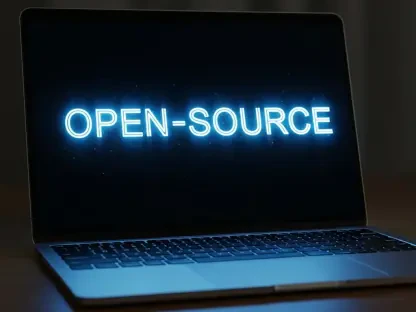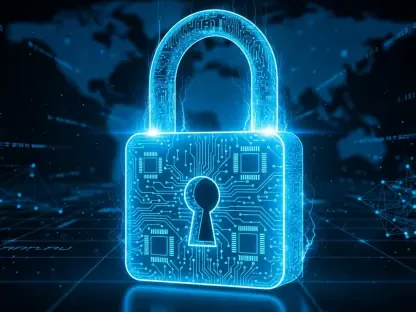The increasing reliance on decentralized power supply systems, particularly those incorporating renewable energy and battery energy storage systems (BESS), has brought significant advancements in energy resilience. However, this shift also introduces new vulnerabilities, making these systems attractive targets for cyberterrorism. The 2018 novel “The President is Missing” by Bill Clinton and James Patterson eerily foreshadows such threats, emphasizing the critical need for robust cybersecurity measures.
Rising Cybersecurity Incidents in the Energy Sector
According to a 2024 report by Kaspersky, 95% of energy companies experienced cybersecurity incidents within the previous year. This alarming statistic underscores the growing urgency for enhanced security protocols within the sector. Remote facilities, including oil and gas operations, are particularly susceptible to these attacks due to their often isolated and less fortified nature. As industries increasingly adopt digitally connected systems, the likelihood of severe, large-scale cyberattacks rises. This adoption of digital connectivity, while improving operational efficiency, also expands the attack surface for cybercriminals, making it easier for them to infiltrate and disrupt operations.
Despite significant investments in technology and infrastructure, an overwhelming 74% of respondents within the energy sector believe their supply chains remain vulnerable to cyberattacks. This perception of vulnerability can be attributed to several challenges in understanding and implementing comprehensive cybersecurity measures at the management level. A considerable 25% of respondents identified issues such as confusing jargon and technical terms, difficulty in quantifying risk, and balancing compliance with operational objectives as primary impediments. This gap in understanding often leads to inadequate cybersecurity strategies, leaving critical systems exposed to potential threats.
Mike Judd, President and CEO of Stryten Energy, emphasizes the importance of energy resilience as power demands increase. Renewable sources paired with BESS offer a promising solution due to their agility in responding to changing conditions and quickly recovering from disruptions. However, integrating these advanced technologies also necessitates a robust cybersecurity framework to protect against potential attacks. The energy sector must prioritize cybersecurity not just at the technological level but also through proper training and awareness among management and operational staff. This holistic approach will ensure that as the sector evolves, it maintains a fortified defense against the ever-evolving landscape of cyber threats.
Sweden’s Advanced BESS Implementation
Sweden has emerged as a leader in the adoption and implementation of BESS, showcasing the potential of these systems in enhancing grid resilience and stability. The rapid development of the energy supply system in Sweden highlights the trend towards increased use of BESS in the Nordics. According to Anna Jäderström of Svenska Kraftnät, Sweden currently boasts more BESS installations than any other Nordic country, significantly contributing to the market’s resilience. The country’s auction system for frequency and effect balance services is a testament to its innovative approach to ensuring a reliable power supply for consumers. This system enables Svenska Kraftnät to manage the grid effectively, utilizing battery storage to bolster the grid’s robustness and offer a degree of immunity to cyberattacks.
The Swedish grid balance system operates at three distinct levels: the national grid’s high voltage network, approximately 20 certified balance service suppliers, and numerous contracted battery storage owners, including single or aggregated BESS units. This multi-tiered structure provides redundancy through technical tests and autonomous operations initiated by commands from Svenska Kraftnät. The future of BESS in Sweden looks even more promising, with plans for operators with a capacity of over 500MW to be capable of rapid operation and providing balance services for extended periods. This capability not only aids in system reliability but also demonstrates how an advanced BESS implementation can create a resilient and secure energy infrastructure.
However, as the implementation of BESS continues to grow, it also brings with it significant risks. The Energy Institute predicts a staggering 15-fold increase in BESS installations worldwide by 2030, making these systems an increasingly appealing target for cybercriminals. Previous cyberattacks on wind farms in Germany and a ransomware incident against a Luxembourg energy supplier serve as stark reminders of the vulnerabilities inherent in BESS integrated into broader energy management frameworks. These attacks, which impacted the control systems of the targeted installations, underline the importance of securing BESS to prevent disruptions that could have widespread and devastating consequences.
The Growing Threat to BESS
The increasing deployment of BESS worldwide introduces significant risks as these systems become more integral to energy infrastructure. The Energy Institute’s prediction of a 15-fold increase in BESS installations by 2030 highlights the urgent need to address cybersecurity for these systems. The rising number of BESS installations globally represents a lucrative target for cybercriminals, who see these systems as potential gateways to destabilizing energy networks. Previous cyberattacks on wind farms in Germany and a ransomware incident against a Luxembourg energy supplier serve as sobering reminders of the vulnerabilities that BESS can introduce when integrated into larger energy management frameworks. These attacks compromised control systems, underscoring the critical need for robust security measures to protect BESS from similar threats.
These incidents serve as a stark illustration of the potential scope of compromise that cyberattacks can achieve. Mike Judd of Stryten Energy explains that while renewable systems incorporating BESS are agile and responsive, they possess finite power that can be exploited by cybercriminals. A decentralized network of microgrids presents a potential solution to this challenge. By distributing loads across multiple points, a decentralized approach mitigates risks by ensuring resilience against single points of failure. However, this distributed structure, while inherently lowering the risk of external cyberattacks, also introduces new challenges. According to Auke Huistra of DNV Cyber, many issues within energy networks stem from internal and non-intentional causes. Suppliers and operators can inadvertently cause local failures, and cybercriminals targeting distribution systems could maximize their impact by exploiting these vulnerabilities.
Huistra emphasizes the importance of properly configured systems to safeguard critical data such as discharge voltage and charge rates. By ensuring that only the control signals to charge or discharge are modifiable, potential breaches can be minimized. This design philosophy aligns with the practices of Svenska Kraftnät, where communication protocols are in place to ensure autonomous activation of systems without direct operator intervention. Properly configured BESS systems serve as a crucial defense mechanism against cyber threats, highlighting the need for meticulous attention to detail in securing these systems.
Ensuring Robust Cybersecurity Measures
To safeguard against the growing threat of cyberattacks, the implementation of robust cybersecurity measures is imperative for the energy sector. Auke Huistra’s insights into the importance of properly configured systems to safeguard critical data such as discharge voltage and charge rates underscore the necessity of meticulous cybersecurity practices. Ensuring that only the control signals to charge or discharge are modifiable minimizes potential breaches, thereby enhancing the security of BESS. This approach aligns with Svenska Kraftnät’s design, where communication protocols ensure autonomous activation without requiring direct operator intervention. By maintaining secure, clearly defined control mechanisms, the resilience of BESS can be significantly bolstered against cyber threats.
The battery industry, as emphasized by Mike Judd, must establish and adhere to robust policies and standards for energy storage systems. Rapidly building large systems without thoroughly considering overall grid resilience could lead to blind spots that cybercriminals could exploit. Industry-driven safety and performance standards are vital, as they can preemptively address vulnerabilities before high-profile failures or blackouts occur. These standards should be developed in collaboration with cybersecurity experts to ensure they comprehensively address the unique threats posed to BESS.
In addition to industry standards, several established protocols are relevant to BESS and cybersecurity. Key standards include IEC 62351, IEC 62443, and forthcoming regulations such as RED cyber requirements, EU CRA, and the NIS 2 Directive. A structured approach to embedding cybersecurity throughout the supply chain is necessary to mitigate risks effectively. Neglecting these fundamental principles could lead to catastrophic consequences during grid failures, underscoring the importance of proactive measures and planning. Regional resilience, as demonstrated in parts of the Netherlands, showcases the need for a coordinated and forward-thinking approach to securing energy systems.
Standards and Protocols for BESS Security
Adopting and adhering to stringent cybersecurity standards and protocols is essential for safeguarding BESS and ensuring the resilience of energy systems. Several established standards are crucial in guiding the industry towards secure practices. Key standards relevant to BESS and cybersecurity include IEC 62351, IEC 62443, and upcoming regulations such as the RED cyber requirements, EU CRA, and the NIS 2 Directive. These standards provide a comprehensive framework for embedding cybersecurity throughout the supply chain, ensuring that all aspects of BESS implementation and operation are secured against potential threats.
A structured approach to embedding cybersecurity is necessary to mitigate the risks associated with BESS. Neglecting these fundamentals could lead to catastrophic consequences during grid failures, highlighting the critical importance of proactive measures. For instance, regional resilience efforts, such as those seen in parts of the Netherlands, exemplify the need for comprehensive planning and implementation of security measures. By adopting a coordinated approach, the energy sector can ensure that BESS and other integrated systems are fortified against cyber threats, thereby maintaining the stability and reliability of the grid.
The geopolitical structure of the battery market also raises concerns regarding cybersecurity. Vadym Utkin of DTEK Group highlights the risks posed by key manufacturers being located in, or controlled by, interests from potentially adversarial states like China. This geopolitical dynamic underscores the necessity for robust operational protocols and stringent cybersecurity standards within the industry. By establishing clear and enforceable guidelines, the energy sector can mitigate risks associated with supply chain vulnerabilities. Ensuring that manufacturers and suppliers adhere to these standards is crucial for protecting BESS and the broader energy infrastructure from potential cyber threats.
Mitigation Strategies and Future Outlook
The increasing shift toward decentralized power supply systems, especially those that incorporate renewable energy sources and battery energy storage systems (BESS), has led to significant progress in energy resilience. These advancements allow for more flexible and sustainable energy solutions, reducing dependence on traditional centralized power grids. However, this transition also brings about new challenges and vulnerabilities. Decentralized systems are becoming appealing targets for cyberterrorism, necessitating enhanced security measures to protect these infrastructures from potential threats.
In the 2018 novel “The President is Missing” by Bill Clinton and James Patterson, the narrative eerily predicts such cyber threats, highlighting the urgent need for strong cybersecurity protocols. The book serves as a reminder of the potential dangers posed by cyber-attacks on critical infrastructure, stressing the importance of being prepared and vigilant.
Ultimately, as we embrace these innovative power systems, it is crucial to address the accompanying risks. Implementing robust cybersecurity measures is essential to safeguard these systems and ensure the continued reliability and resilience of our energy supply. As technology evolves, so must our strategies to protect against the ever-growing threat of cyberterrorism.









